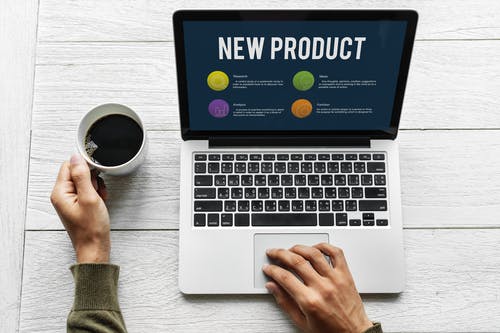There are a number of ways you can deliver your sales demos. You might offer your prospects different options to be flexible and meet their needs.
Ensure you have all of the tools needed to offer these sales demo delivery methods. For example, if you decide to deliver a sales demo via video chat, make sure you have access to software like GoToMeeting or Zoom, which allow easy screen share, face-to-face video chat, messaging, call features, and more.
Each demo should follow a structured process that ensures the demo is targeted at the specific prospect.
If you’re just re-running the same demo every time, you won’t be making maximum impact.
Here are our suggested steps to follow:
1. Research Your Prospect
First and foremost, research your prospect. You should have a deep understanding of the prospect’s needs and pain points as well as what it is the company they work for does. This will allow you to tailor and customise the demo to the prospect’s specific needs and situation.
2. Confirm the Sales Demo
Send a calendar invite as soon as you’ve confirmed the date and time of the demo (don’t forget to include any dial-in information if needed). Ask if anyone other than the person (or people) you listed on the invite will be attending so you can add them. Then, follow up with a confirmation email the day before, or a few hours prior to, the demo.
3. Plan Your Sales Demo Before the Meeting
There are many ways to plan your sales demo in a way that will enhance it and make it more engaging depending on the channel you choose to present through. For example create a personalised set of slides (if you’re using them) and have any relevant links loaded and ready to go in tabs on your browser to reference so you can easily incorporate them throughout the presentation.
4. Humanise the Sales Demo
To avoid coming off as a pushy, untrustworthy, and possibly unpleasant, ensure you’re personable and show your caring, human side at the beginning of the call. Rapport doesn’t stop here. Build it at the beginning of the call and ensure it’s continually injected throughout all other parts of the sales demo as well to establish a human and trusting relationship.
5. Set an Agenda for the Demo
Prospects should be informed of this agenda prior to the demo beginning and can also be reminded of which stage of the agenda they’re actually in throughout the demo. This sets expectations and keeps everyone organised and on task. Knowing what will happen during the demo will put the prospect at ease. Emphasise there will be time at the end of the demo for the prospect to ask detailed questions (but you can also stress questions are welcome at any time).
6. Summarise Past Conversations
Mention any past conversations you’ve had with this specific prospect. This will remind them why they needed your assistance to begin with, why they are considering doing business with you, and how you determined you can help them during any previous conversations.
7. Explain the Product or Service
Now, it’s time to explain your product or service. When doing this, you’ll want to ensure the explanation is both specific and tactful. Start with an overview or the product and it’s basic features. Explain why this product exists, and link it to the prospect’s business. Each feature being presented in the demo should link back to why the product is the best solution for the prospect’s challenge.
Next, bring in the “wow” factors. This should answer the question, “What unique value does the product offer?” If your company provides excellent customer service to help with the onboarding process and beyond, reference this in this part of the demo. Knowing help will be available when needed does wonders to reassure a doubtful prospect.
8. Address Any Questions the Prospect Has
Throughout the demo, try to anticipate possible objections the prospect might have by listening to their tone and even watching their facial expressions (if they’re on a video call or meeting in person). By picking up on these emotions and concerns, you can frame your responses and answers in a more personalised way. You can also determine whether or not you should show an example of a customer successfully solving the same problem using the tools being referenced.
9. Set Expectations For Next Steps
Let the prospect know upfront what’s required on their end for the solution to be successful. If they’re interested in learning more or keeping the conversation going, you can set up a follow-up conversation. Or — even better — if the demo was highly effective in convincing the prospect, it might be time to begin a closing sequence to complete the deal (fingers crossed!).
If you need help building and delivering effective demos… get in touch
Don’t forget to subscribe to get regular updates and ideas.
